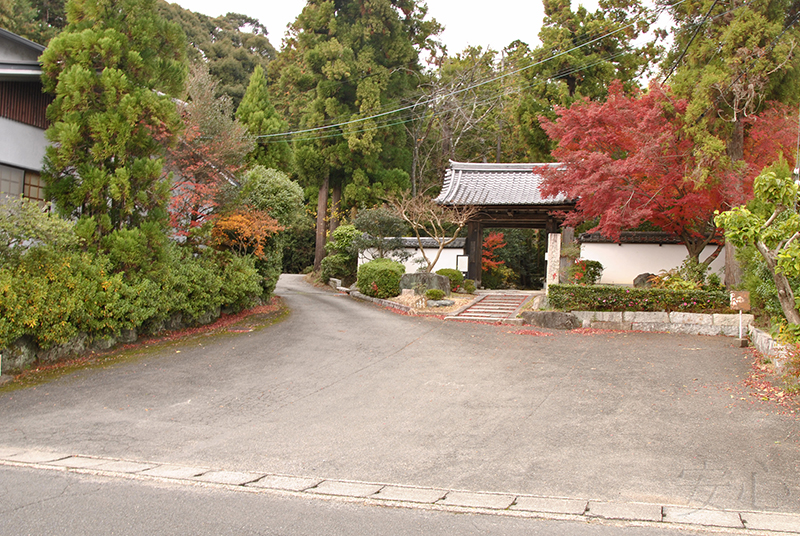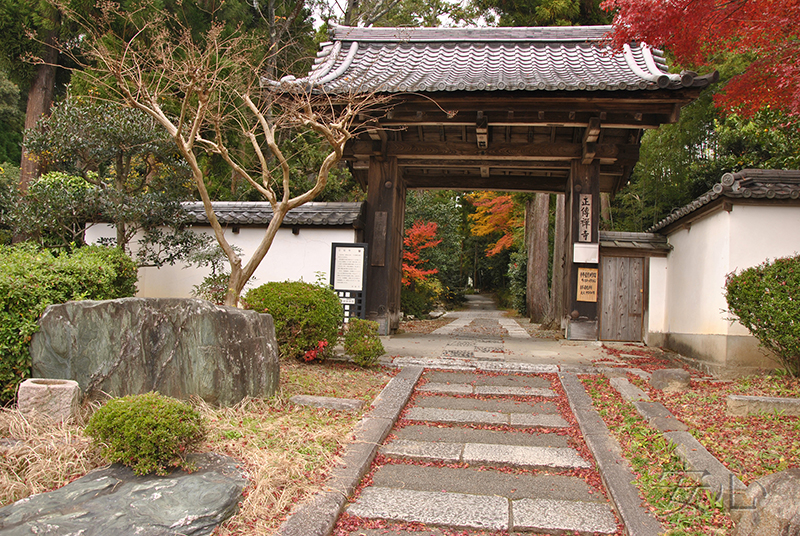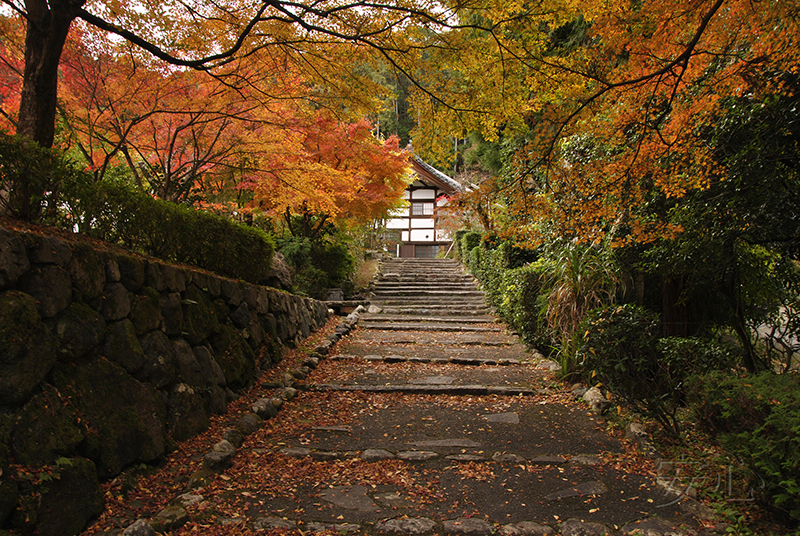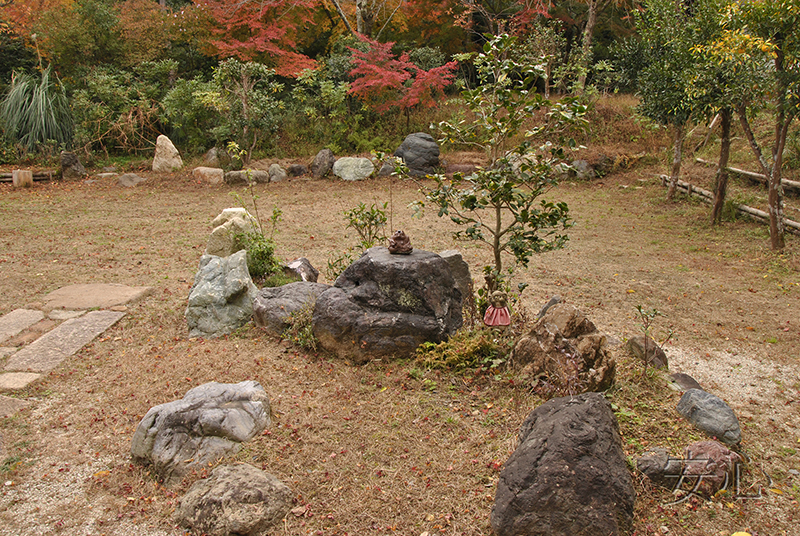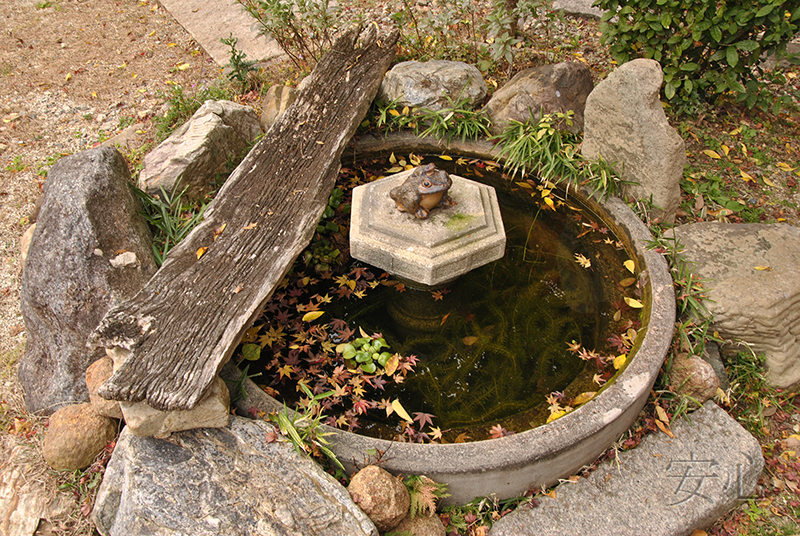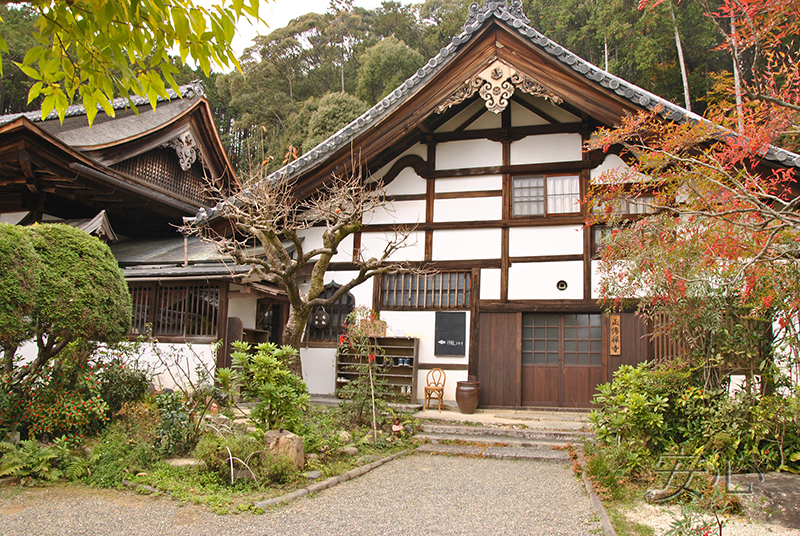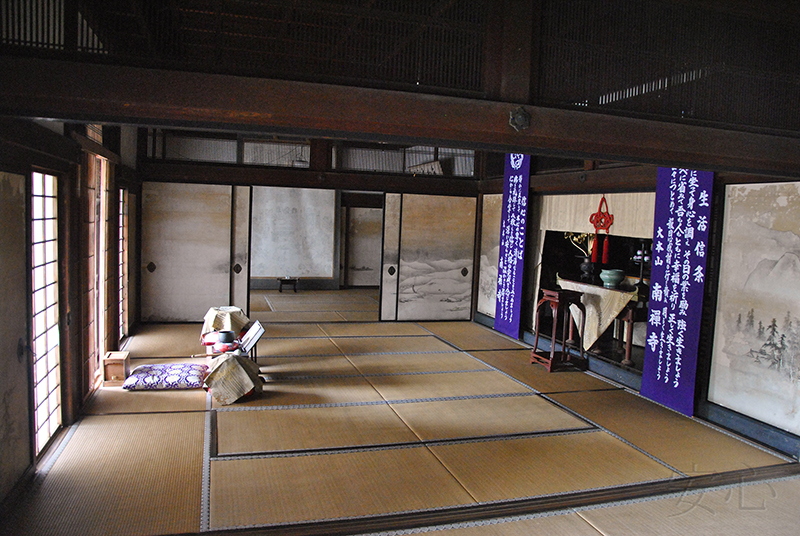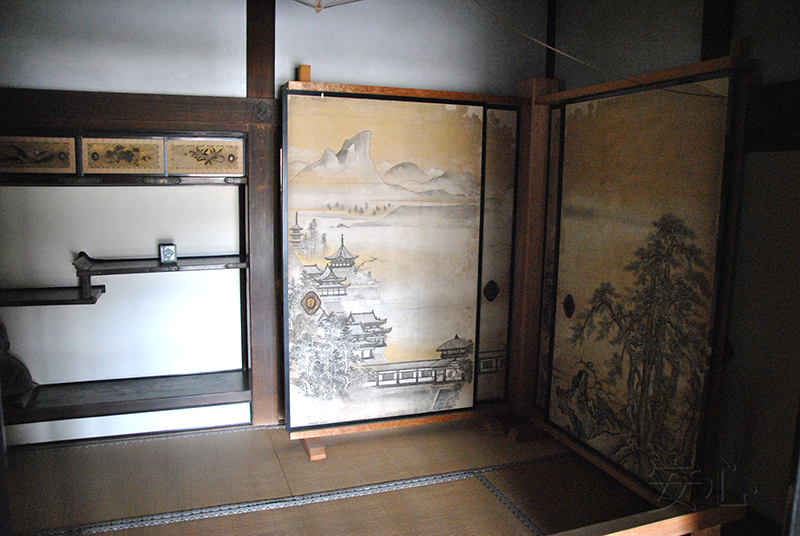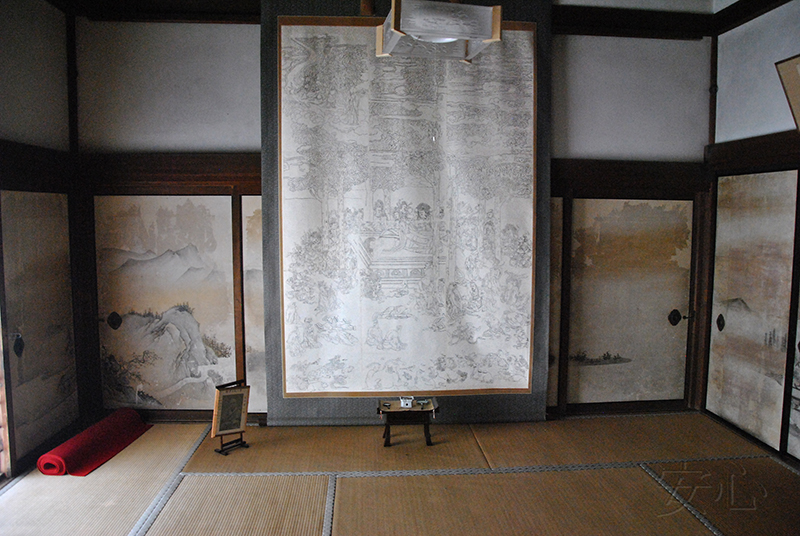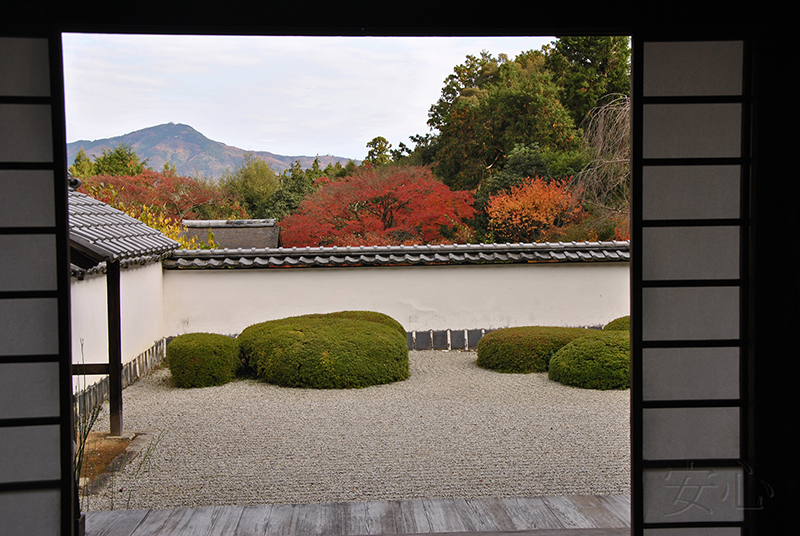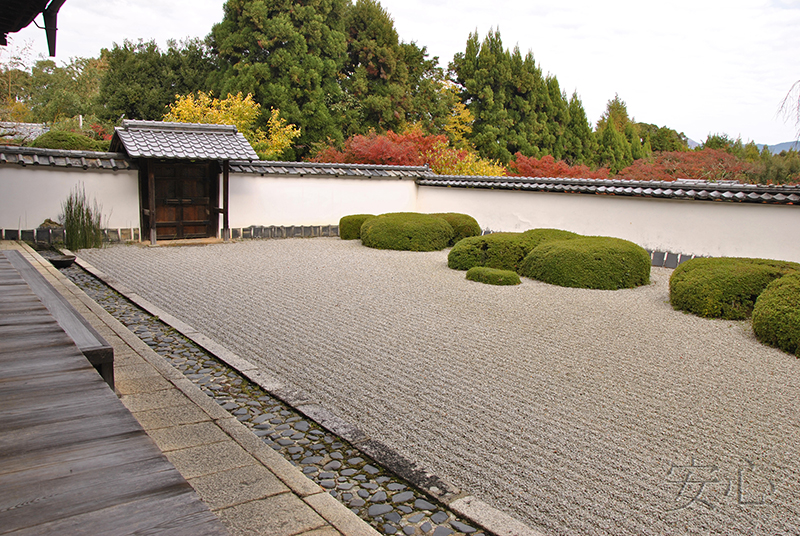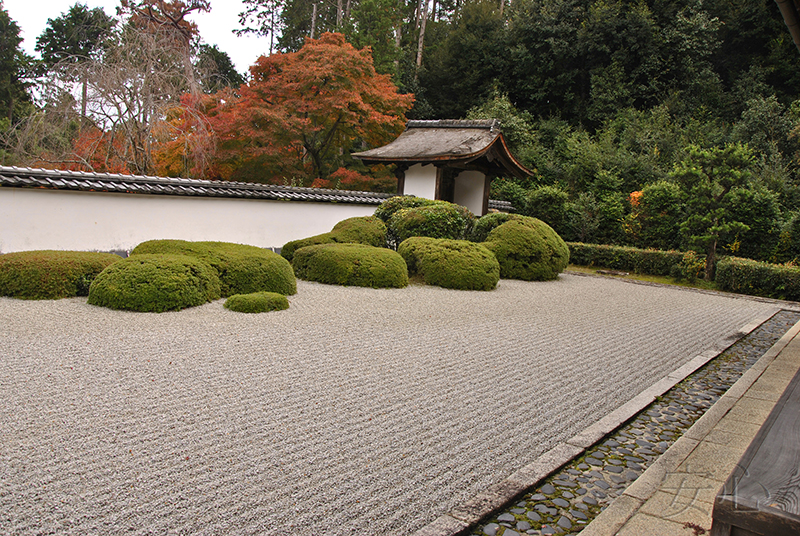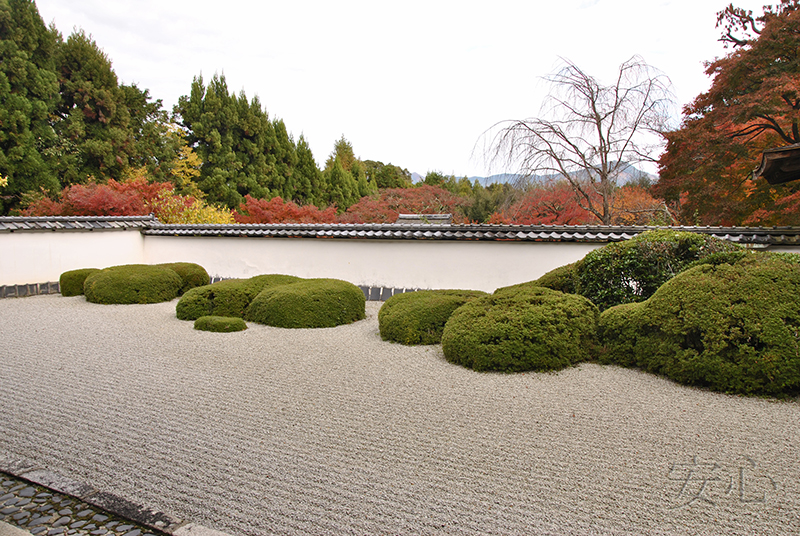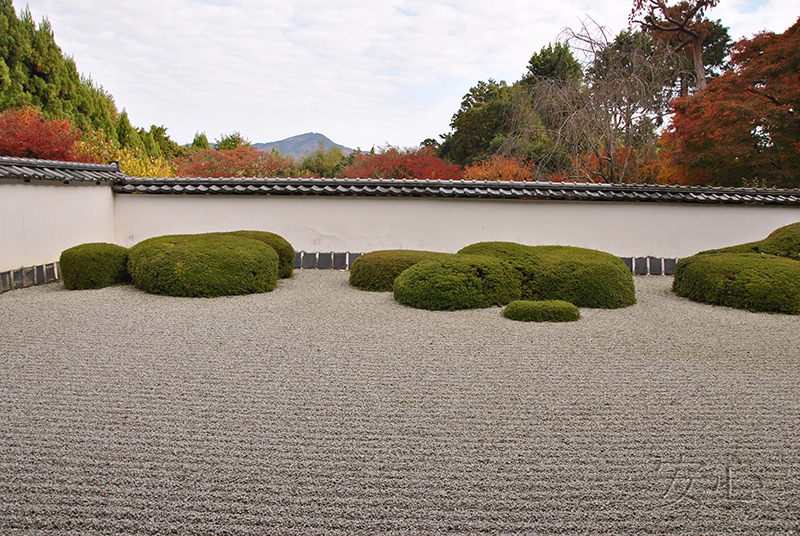
Shodenji Temple gardens, Kyoto
There are temples in Japan where tourists from all over the world arrive. It is often noisy there, especially when the guides bring large groups. It is difficult to sit, relax, delve into the idea of the artist who created the temple garden, just put into the surging thoughts. In such places, even if they are very beautiful, I want to take photos, if possible, without the other people, and quickly leave for another garden. Perhaps it will not be so big, not so significant, but here there is a chance to experience much sharper feelings.
And such a place can become the garden of the Shoden-ji temple. It is not included in the main tourist routes, you can visit it only on your own.
The approach to the garden plays an important role. Among the ordinary residential houses suddenly there is a gate leading to the forest. To the left are two stones, one huge, like a rock, the other flat and long. Between them is placed a bowl of chozubachi made of light stone. To the right are three more stones and a sprawling maple grows.
The forest truly looked fabulous that day. Scarlet maples added a special charm to it. Plus, there was absolutely no one there!
At the end of the path, a piece of the temple building appeared in the gap of the trees.
But, before going there, we looked into a small courtyard located near the entrance. In the middle of it stood a two-story building with a bell.
In the yard, among the stones, we saw figurines of animals. And in a bowl of water was a figurine of a frog with a baby on its head. Apparently, they all carry some kind of security function))
After walking a little more around the courtyard, we returned to the entrance to the temple.
Shoden-ji, an ancient temple of the Nanzenji school of the Rinzai sect, was founded in 1282. Like many temples in Japan, it experienced periods of decline and prosperity in its history. Interestingly, it is one of the temples with the so-called "bloody ceiling". In the 17th century, when noble feudal lords fought for sole dominance, Ieyasu Tokugawa (who later won this fight) left his samurai and loyal ally with a small army to guard the captured Fushimi castle. Subsequently, they had to engage in an unequal battle and, as a result of betrayal, the enemy penetrated the territory of the fortress. The warriors committed seppuku, and their blood soaked the floorboards. After the victory, Ieyasu dismantled the castle, and blood-stained boards were used for ceilings in several temples. In this way he honored the spirit of the warriors by placing the boards so that no one could ever step on them.
Unfortunately, I learned about this after visiting Shoden-ji, so I did not pay attention to the ceilings. So if you get there, be sure to check it out. But I took pictures the paintings in the main hall. They are said to have been painted by Kano Sanraku, a famous Japanese artist of the late 16th and early 17th centuries. The paintings depict the scenery of the West Lake in Hangzhou (China).
Most likely, this is a sculpture of the artist himself.
There is also a scroll depicting the death of the Buddha. The photo is overexposed, but if you enlarge it, you can see the drawing.
Well, the most important thing for what it is worth coming here is a unique dry garden. You can admire it from the hall by slightly opening the shoji or from the engawa that runs along the side of the building.
What is unique about this garden? First of all, there are not stones in the white gravel, but groups of clipped azaleas, what is not typical for karesansui in the classical tradition. At the same time, the plants themselves are located according to the same principles as the stones are arranged. Azaleas are grouped in 7, 5 and 3 (shichy-go-san). This configuration was considered particularly favorable in terms of health and longevity.
Another feature of the garden is the stunning beauty of the background. Behind the white walls we see Mount Hiei, which is included in the picture of the garden by genius master.
In autumn, you can admire red maples, in spring there is blooming weeping sakura, and in summer azaleas are covered with numerous flowers. Some people manage to look at the full moon shining on full moon days over Mount Hiei. However, most likely, for this you need some special agreements, because the temple closes at 5 p.m.
As for the authorship of the garden, then everything is vague. Many sites has information that the author is Kobori Enshu. And only a few researchers note that the Hojo (main hall) was moved to this place in 1653. It was then that the dry garden was created. However, by that time, Kobori Enshu had already been dead for six years! So, either the author is still different, or something else is meant. For example, a garden could be created in the likeness of his another garden or according to his drawings. But, in any case, the author of the garden was really unusually talented!
The fact that the garden, despite its apparent simplicity, makes a strong impression, cannot be overlooked. So, there is a well-known fact, when David Bowie was invited to star in a commercial for the shochu drink, he chosed Shoden-ji. According to the recollections of eyewitnesses, “during the filming, Bowie looked at the garden with tears in his eyes”, he was fascinated by the silence and beauty of the surrounding landscape.
Singer-songwriter Shinji Tanimura expressed his admiration: "The silence of winter is exceptional, and just sitting on the porch of the main hall, you can forget about time and feel how the heart calms down."
I think that the garden of the Shoden-ji temple is worth visiting and experiencing for yourself what those who have been here are talking about.
Garden Information:
Address: Kita-Ku, Nishigamo-Kitachinjuan-cho 72, Kyoto, Japan
Opening hours: from 9 a.m. to 5 p.m.
anshin©2011All rights reserved. When using the materials of the site, reference is obligatory.
Proposals for co-operation, as well as comments and suggestions on the site please send to the address: anshinsad@gmail.comtel: +7 (965) 121-80-60, 10am-20pm
